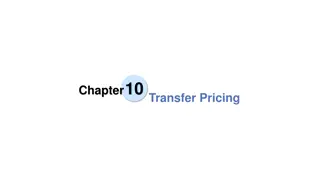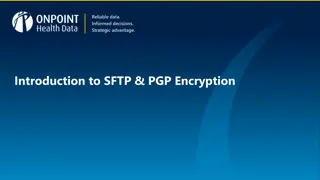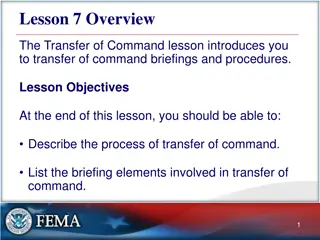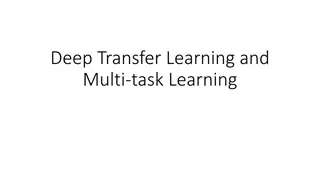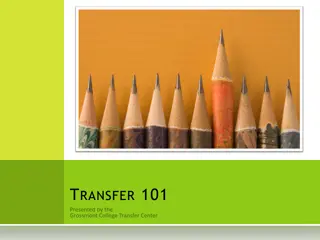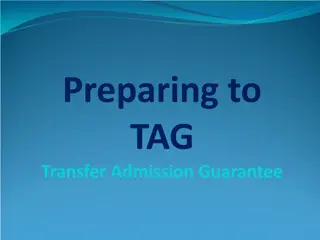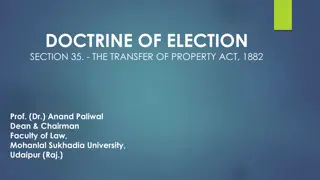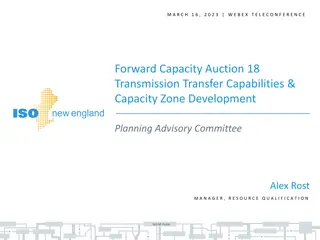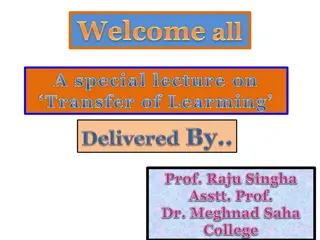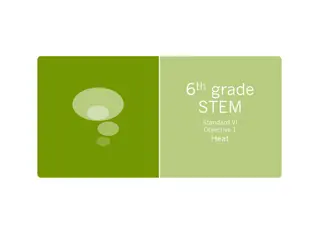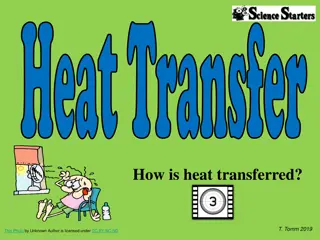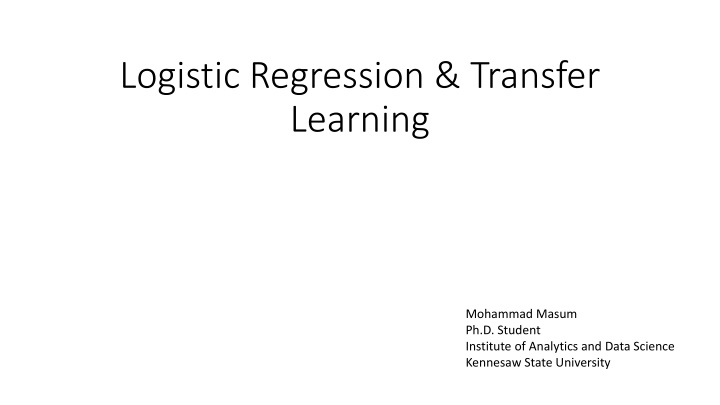
Logistic Regression & Transfer Learning in Data Science
Explore the concepts of Logistic Regression and Transfer Learning in data science through practical examples such as binary classification of MNIST digit data. Learn about the benefits of transfer learning and pre-trained models in image classification, featuring architectures like VGG16 and the process of feature extraction. Understand the challenges of using models like VGG16 in different contexts and improve your understanding of data representation and feature extraction techniques.
Download Presentation

Please find below an Image/Link to download the presentation.
The content on the website is provided AS IS for your information and personal use only. It may not be sold, licensed, or shared on other websites without obtaining consent from the author. If you encounter any issues during the download, it is possible that the publisher has removed the file from their server.
You are allowed to download the files provided on this website for personal or commercial use, subject to the condition that they are used lawfully. All files are the property of their respective owners.
The content on the website is provided AS IS for your information and personal use only. It may not be sold, licensed, or shared on other websites without obtaining consent from the author.
E N D
Presentation Transcript
Logistic Regression & Transfer Learning Mohammad Masum Ph.D. Student Institute of Analytics and Data Science Kennesaw State University
Logistic Regression Mnist Digit Data Binary classification; Label 7 & 8 Shape 8,000 x 784
Logistic Regression Mnist Digit Data Binary classification Shape 8,000 x 784
Transfer Learning Transfer learning is a machine learning method where a model developed for a task is reused as the starting point for a model on a second task Three Possible Benefits: Higher start Higher slope Higher asymptote The benefits of using transfer learning is not obvious
Transfer Learning: Pre-trained Model Available Models in Keras Framework Models for image classification with weights trained on ImageNet Xception VGG16 VGG19 ResNet50 InceptionV3 InceptionResnetV2 MobileNet DenceNet NasNet MobileNetV2 Built by: Oxford Visual Geometry Group Total 16 layers Given image find object name in the image It can detect any one of 1000 images It take input image size 224 x 224 x 3 (RGB image)
Pre-Trained Model Number of Features Feature Extraction
DataRepresentation Mnist Image Data Extraction Feature Last Conv Layer Flatten Data
Logistic regression with Extracted Features Data Possible reasons that VGG16 does not perform well: VGG16 is trained for 3-channel RGB images while mnist digit data is 1-channel gray scale Background of images VGG16 trained for 1,000 objects label









